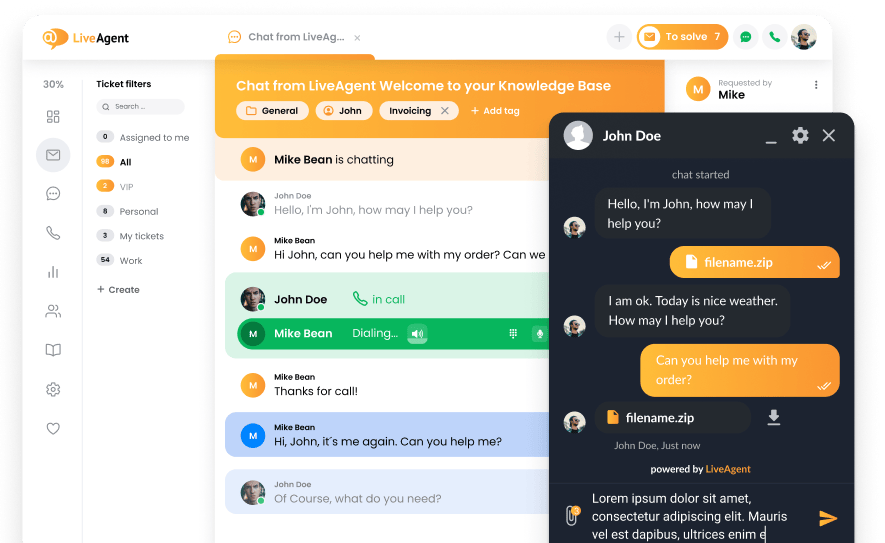The Yotpo survey on American shoppers’ attitudes towards customer loyalty in 2018 found that over 52% of loyal customers are ready to join a loyalty program if one is offered to them.
The Loyalty Report 2018 by Bond Brand Loyalty also revealed that consumers spend 37% more with brands when they are a loyalty program member, while 37% are even willing to pay a fee for access to enhanced loyalty program benefits.
What is a customer loyalty program?
A customer loyalty program is a marketing tactic. It is used by companies to encourage repeat customers to purchase more by offering them certain benefits and rewards. Those benefits may vary from discounts or free products to any other perks that are valuable to customers. An effective loyalty program for rewarding customers basically fulfills three basic marketing goals and objectives:
- Improves customer loyalty and customer lifetime value;
- Increases profits by selling, up-selling, and cross-selling more products or services to current customers;
- Defines an ideal customer profile by capturing customer data and purchasing behaviors.
Great customer loyalty programs (examples):
- Amazon Prime
- Sephora Beauty Insider
- Starbucks Rewards
- American Express Plenti
- Virgin Atlantic Flying Club
Benefits of customer loyalty programs
Apart from increased customer retention and boosted profits; offering reward programs for customers results in a number of other benefits for businesses. With the right strategy, these benefits enable businesses; build a deeper emotional connection with existing customers, drive more meaningful customer engagement, and even create brand advocates.
Moreover, they also allow the gathering of valuable customer data that can be further used for personalizing customer experiences. Thus, creating targeted marketing campaigns. Implementing a new loyalty program is an investment. It helps businesses to actually save money since retention strategies are usually less expensive than attracting new customers. You can find different types of loyalty programs down below.
Basic types of loyalty programs
- Point program offers customers the ability to earn points that can be redeemed for discounts or other rewards.
- Tiered program is based on the levels of loyalty: the more points are earned – the higher rewards will be received.
- Paid program (VIP member club) provides access to exclusive benefits for the members who pay a monthly or annual fee.
- Value-based program includes brand donations to a charity that allows connecting with customers on a deeper level.
- Coalition program implies partnering with other businesses to offer customers discounts with the associated brands.
- Game program is powered by gamification and focuses on engaging customers instead of just getting transactions from them.
- Cashback program encourages repeat customer spending by offering cashback.
- Hybrid program combines several types of loyalty programs, usually point-based and tier-based systems.
7 steps to create an efficient customer loyalty program
The right customer loyalty program design is mission critical. Below are 6 important aspects to consider when creating a loyalty program to ensure its success and profitability.
1. Study your current customer base
The first step in rolling out an effective customer loyalty program is researching your existing customers. This gives you a clear understanding of which customers to target and determine their motivations to join a loyalty program.
2. Decide on the right types of rewards
According to the 2019 Loyalty Barometer Report by HelloWorld, from a rewards perspective;
- 77% of consumers enjoy free products
- 75% prefer discounts and offers
- 66% would like to get free samples
- 57% favor free services
- 41% like chances to win prizes
- 32% love receiving surprises from the brand
Moreover, choose the right types of incentives that are most relevant to your customers.
3. Make it simple and easy to use
The more complex the loyalty program is – the harder it is to encourage customers to enroll. The 2017 COLLOQUY Loyalty Census research revealed; ease of use is the main reason for participating in a loyalty program for 53% of U.S. consumers. Among other reasons, “easy to understand” was cited by 37% of respondents.
4. Ensure engagement through various channels
The recent survey by Marketsplash reported; 71% of consumers would actively engage with loyalty programs if they could access their rewards information from their smartphones. It also found that;
- 86% of consumers are likelier to join a loyalty program offering a seamless experience across multiple channels
- Brands that have implemented robust omnichannel customer engagement strategies achieve an impressive 89% customer retention rate
- Mobile app usage for loyalty programs has grown by 26% in the past four years, reflecting the increasing trend of mobile-based rewards and engagement
5. Avoid the most common pitfalls
As stated in the Loyalty Report 2018 by Bond Brand Loyalty; to ensure customer loyalty program success, the following TOP four pitfalls and sources of member frustration should be avoided:
- Having expired points
- Desired rewards being unavailable (either through blackouts or catalog changes)
- Dealing with representatives who aren’t knowledgeable about the program
- Being overwhelmed by emails
6. Make rewards valuable and easily attainable
Make sure the loyalty program offers rewards that are not only valuable for customers but are also easily attainable over a reasonable period of time. According to 2017 COLLOQUY Loyalty Census research and 2019 Loyalty Barometer Report by HelloWorld cited;
- 57% – “it took too long to earn points of rewards”
- 53% – “it did not provide rewards I was interested in”
- 54% – “it takes too long to earn a reward”
These were the most common reasons for abandoning a customer loyalty program.
7. Measure the effectiveness and adjust if needed
When rolling out a loyalty program, there are a few important metrics to consider to measure its overall effectiveness. Such as customer retention rate, customer churn rate, Net Promoter Score, and Customer Effort Score. For example, if a loyalty program is successful; the customer retention rate should increase over time as more members join the program. If the numbers are not satisfactory, be ready to make the necessary changes. The changes are based on how the program is performing and how the customers are responding to it.
Customer loyalty programs for small business
We have already mentioned the great benefits of having a customer loyalty program. Every company can leverage these programs, even a small business. The ROI is customer retention, customer awareness, referrals, and more. Don’t sleep on this opportunity and pick a budget-friendly loyalty program for your business.
Examples of customer loyalty programs for small business:
- Customer loyalty cards (punch cards or membership cards)
- Online registration
- Email marketing
- Mobile apps
Customer loyalty programs for small businesses might differ from industry to industry. However, it does not always mean that one is better than the other.
If you would like to learn more, check out our in-depth Customer appreciation article.
Discover on your own
Knowledge is important, but only when put into practice. Test everything in our academy right inside the LiveAgent.

Try out LiveAgent for FREE
Handle all customer inquiries from one interface. Start improving your customer service with a 30-day free trial right away!
Frequently Asked Questions
What makes an effective customer loyalty program?
A successful program should aim to retain existing customers, increase customer lifetime value, and foster a sense of appreciation among customers. It's also important for a loyalty program to be easy to understand and use, with clear and achievable rewards. A complex or confusing program may deter customers from participating, while a simple and transparent program can build trust and engagement.
What should a loyalty program offer?
A loyalty program can offer various rewards, discounts, exclusive access to products/services, or personalized experiences in order to encourage repeat business and foster loyalty. In determining what a loyalty program should offer, it's essential to consider the specific needs and preferences of the target customer base.
What is a customer loyalty program?
A customer loyalty program is a marketing tactic. Companies use a loyalty program to encourage customers to purchase more by offering them certain benefits and rewards.
What is an example of a great loyalty program?
One great loyalty program example is Amazon Prime, which provides free delivery with other perks and benefits for their members.
What are the benefits of customer loyalty programs?
Apart from increased customer retention and boosted profits, offering reward programs for customers results in several other benefits for businesses. Such as build a better connection with existing customers or/and drive more meaningful customer engagement.
How to build a steady and loyal customer base
Building a steady and loyal customer base doesn’t happen overnight, but what does? Read the Top 20 tactics to increase customer retention.
Loyalty program email templates
Carefully crafted loyalty program email templates can keep customer retention high, and churn low. Show your customers your appreciation today.
How to use customer incentives
Would you like to stimulate customer purchases? Read about how to use customer incentives and improve your customer service with LiveAgent.
Relationship marketing: How to connect with your customers
First, there’s the initial spark of wonder. Then, there’s the commitment as you settle into a routine and plan a future. However, there’s also competition.

 Български
Български  Čeština
Čeština  Dansk
Dansk  Deutsch
Deutsch  Eesti
Eesti  Español
Español  Français
Français  Ελληνικα
Ελληνικα  Hrvatski
Hrvatski  Italiano
Italiano  Latviešu
Latviešu  Lietuviškai
Lietuviškai  Magyar
Magyar  Nederlands
Nederlands  Norsk bokmål
Norsk bokmål  Polski
Polski  Română
Română  Русский
Русский  Slovenčina
Slovenčina  Slovenščina
Slovenščina  简体中文
简体中文  Tagalog
Tagalog  Tiếng Việt
Tiếng Việt  العربية
العربية  Português
Português 




